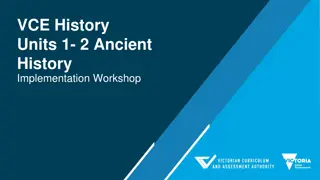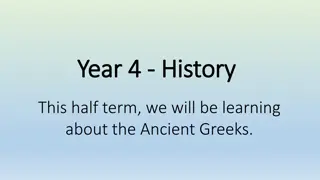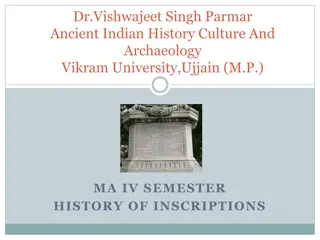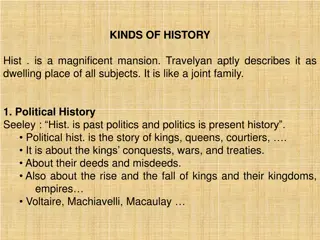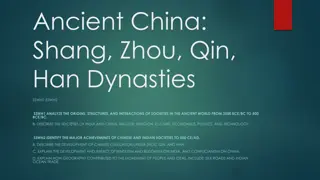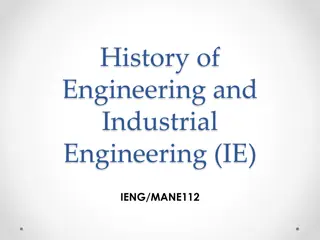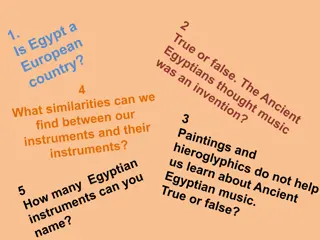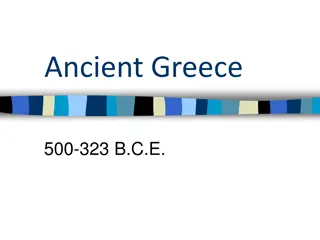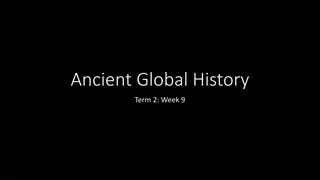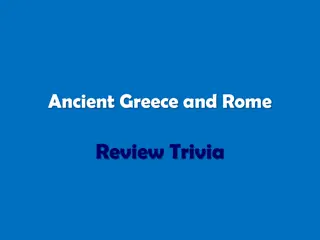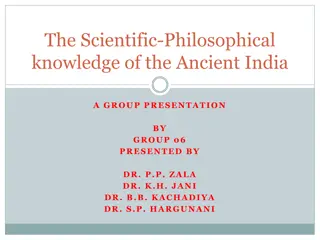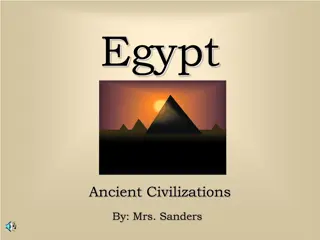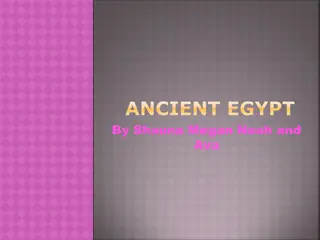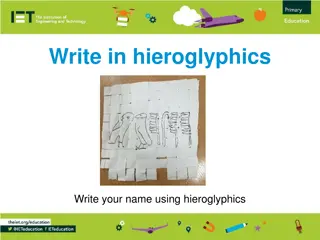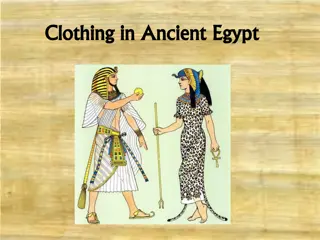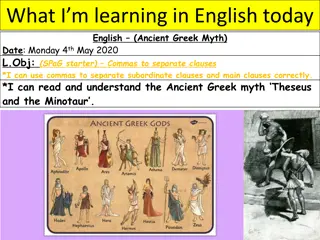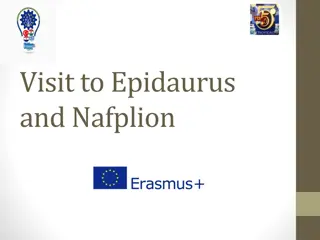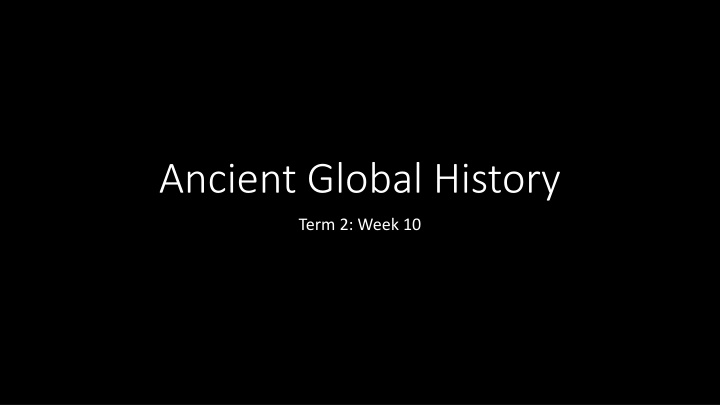
Ancient Global History
Delve into the development and influences of Chinese pagodas and Dunhuang Caves in Ancient Global History. Discover the fusion of stupa and watchtower in pagoda designs and the varying architectural styles seen in the caves from different periods. Explore the intricate statues carved in sandstone and the unique features of the Terracotta Army. Prepare for exams by analyzing text and image gobbets from class discussions.
Download Presentation

Please find below an Image/Link to download the presentation.
The content on the website is provided AS IS for your information and personal use only. It may not be sold, licensed, or shared on other websites without obtaining consent from the author. If you encounter any issues during the download, it is possible that the publisher has removed the file from their server.
You are allowed to download the files provided on this website for personal or commercial use, subject to the condition that they are used lawfully. All files are the property of their respective owners.
The content on the website is provided AS IS for your information and personal use only. It may not be sold, licensed, or shared on other websites without obtaining consent from the author.
E N D
Presentation Transcript
Ancient Global History Term 2: Week 10
Buddhist Art / Architecture For discussion: The development of the Chinese pagoda from the design of the Buddhist stupa: Great Wild Goose Pagoda built in 7th century to commemorate return of a Chinese Buddhist monk from India (and house relics and manuscripts brought back by him). Many argue that Pagoda is fusion of Buddhist stupa (round) with Han-era watchtower
Dunhuang Caves (Mogao caves/Thousand Buddha Grottoes) Architecture: First cave built second half 4thc CE. Early caves are argued to have been more influenced in design by Buddhist architecture in India. E.g. Meditation Caves square main chamber, with meditation cell opening on both sides (e.g. cave 285). Comparable to vihara style in India (e.g. Ajanta caves). Caves at Dunhuang (e.g cave 428) also copy the chaitya (prayer hall) style of Indian Buddhist architecture (e.g. Ajanta caves). But later caves (from 7thc CE) tend to follow Assembly Hall style (e.g. cave 429), a style not known in India. Statues: Carved in sandstone fine sculpting not so easy - so often overlaid in clay stucco to allow for more details effects. Influenced by both Gandharan and Mathuran schools, as well as by later Gupta art (4thcentury CE). Cf. S. Whitfield (ed.) The Caves of Dunhuang 2010
Cave 259: Northern Wei Statue (5th-6th c CE) Cave 275: Early Buddha with central Asian influence
The Terracotta Army: an example of earlier influence? See article by L. Nickel The First Emperor and Sculpture in China Bulletin of the School of Oriental and African Studies 76.3 (2013) p.412-47.
Thinking towards the exam Format: Gobbets (text and images) from texts and images we have discussed in class/seminars Essays Requirements: Respond to 1 text gobbet and 1 image gobbet Comment on points of interest/difficulty Respond to 2 essay questions
Gobbets (we will do more of these next term) (For) Soados son of Boliades, son of Soados, a [pious man and] friend of his city, who has nobly a[nd generously] rendered assistance on many [important] occasions to the mercha[nts and the] cara[va]ns and his fellow-citizens at Vologesia[s]. He was a[l]ways unsparing of his [l]ife and fortune in matters of im[p]or[t]ance to his city and for this was [honour]ed by decrees and popu[lar vot]es and public statues and letters and by an edict (read by) Publicius Marc[ellus] [the] most illu[strious] consul[ar] governor. In that he saved the caravan which had [rece]ntly arrived from Vologesia[s] from the great danger that surrounded i[t], the same caravan, [in recognition] of his [valo]ur, magnanimity [and piety] set up [four stat]ues of him, one here in the sanctuary of Zeus (i.e. Baalshamin), one in the sacred grove, one [i]n the sa[nctua]ry of Ares and the fourth in the sanctuary of Atargatis, through the services of Agegos son of IaribPlOs and Thaimarsos son of Thaimarsos, caravan leaders. In the year 443, the month Peritios (February, 132 CE/AD). Palmyrene Honorific Inscription G14.
Essay Questions Will focus on key topics/ themes/ ideas/ moments covered in lectures. Will often be formatted as a statement or idea, which you are asked to discuss/ respond to with your own choice of case studies. Best way to revise: Work out key themes and issues of the course + key moments in the story of connections between cultures + key debates about how we study it. Develop a series of case studies that interest you involving interaction between a number of different cultures from different times. Make sure you have good primary evidence to hand (from lectures/seminars) and think about what each of your case study could be used to exemplify.
The ports of ancient India were the most international places on the Silk Roads Discuss. To what extent was ancient global connectivity the result of the work of individuals rather than states?


